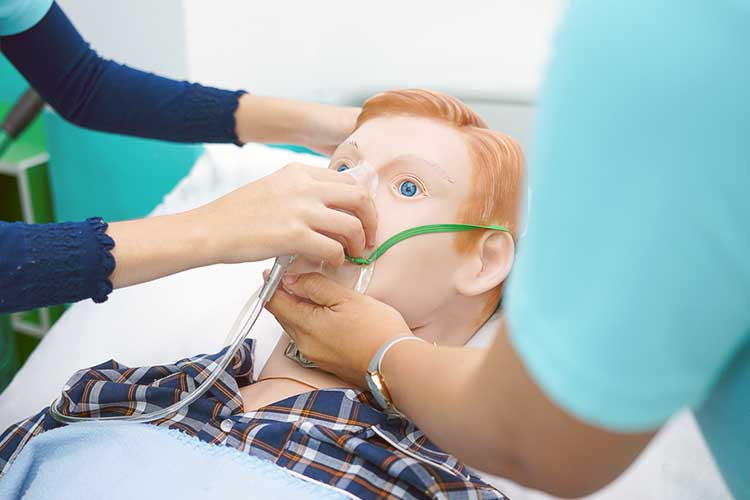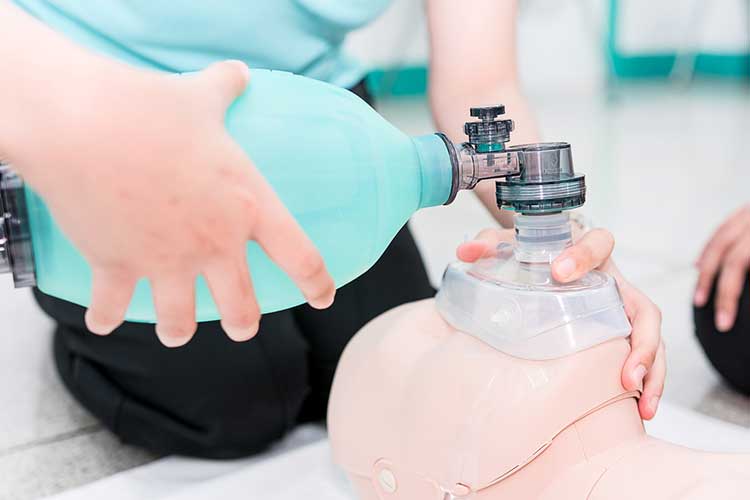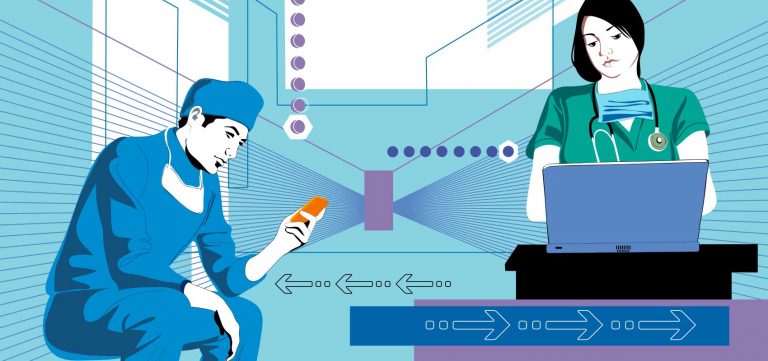Moving to different clinical environments and embracing new responsibilities can be stressful and challenging for even the most experienced practitioners.
For newly qualified staff, however, managing the gap between theory and practice can seem overwhelming.
The theory-practice gap, or research-practice gap as it’s sometimes called, occurs when practitioners struggle to integrate knowledge learnt in an academic environment with real-world clinical practice.
As standards of care continue to evolve from practices rooted in custom and tradition to an evidence-based profession, there can often seem to be a disconnect between what is considered best practice and actual practice.
This is a problem because, as Matthew and Tucker (2018) note, when clinical practice no longer reflects the best available scientific evidence, the result can be sub-standard patient care.
The theory-practice gap is nothing new, and even though the challenge of bringing research evidence and clinical practice closer together has been recognised for years, it still remains a problem, especially for newly qualified staff.
Of course, as Chapman (2017) says, nurses shouldn’t expect to know everything. Yet, it’s only by understanding practice in relation to theory that skills and knowledge can be kept relevant and up-to-date.

What Does the Theory-Practice Gap Really Mean?
In the view of Chapman (2017), the theory-practice gap can be viewed in the following ways:
- The difference between idealised practice and common practice
- The difference between taught general principles and the difficulty in interpreting them for application to a specific situation
- The gap between taught abstract nursing theory and its use in practice
- The gap between scientific knowledge and theory used as common practice
- The gap between our individual mental representations of nursing and the published theories of nursing
- The gap between the theories practitioners claim underlie their practice and the implicit theories embedded within their practice, of which they may not be aware.
For nurse educators, the dichotomy between the theoretical input taught in the classroom and what is practised or experienced on the wards remains a perennial problem (Landers 2000), and nowhere is this gap so large as for newly qualified students.
It’s a gap that is inevitably encountered by all nurses at various times in their careers, but it is student nurses, given their novice status and limited experience, who perhaps struggle most to manage the theory-practice void (Scully 2011).
There have been many initiatives introduced over the years in an effort to bridge the theory-practice gap, most of which have focused on the role of the nurse teacher, preceptor or mentor. Yet, despite a high level of awareness of the problem and a willingness to find creative solutions, barriers still remain to integrate research-based theories into clinical practice.
Barriers to Implementing Research
Armstong (2009) makes the following suggestions as to why this problem remains so difficult to tackle:
- Nurses not feeling that they have authority to implement research findings
- Insufficient time on the job to implement new ideas and/or to read research articles
- Management and/or doctors not allowing and/or cooperating with implementations
- Statistical analyses not being understandable
- Facilities being inadequate for implementation
- Other staff being unsupportive of implementation.
Can the Gap Ever be Closed?
The all-important question is, ‘can the theory-practice gap ever be closed?'
Cook (1991) argues that it cannot, and that while the narrowing of the theory/practice gap may be a realistic goal, attempts to close it completely are 'doomed to failure'.
Making Use of Clinical Mentorship
Whilst questions about how to completely close the theory-practice gap remain unanswered, the role of the mentor is gaining increasing recognition as the best way for novice practitioners to make sure that their knowledge is both up-to-date and relevant to their practice.
It’s long been understood that the best learning comes through experience and that practitioners prefer to use the knowledge they gain from their colleagues.
However, this preference can be a double-edged sword, as knowledge picked up ‘on the go’ could be flawed or even misinterpreted (El Hussein & Osuji 2017).
This is why nurse educators and competent mentors have such an important part to play in encouraging reflection and critical thinking to help minimise the gap between research and practice. By sharing their experiential knowledge validated by real experience, they can assist learners to keep their knowledge up-to-date in a way that is both consistent and valid for real patient care.
As Rolfe (1998) simply points out, the aim of nursing research is the generation of knowledge, and whilst this is a relevant aim in theory-based disciplines such as sociology, the primary concern of nursing is with practice.
In other words, if clinical research is actually to make a difference to practice, it must be practitioner-based.

Closing the Gap is a Shared Responsibility
To date, all attempts to bring research and practice closer together have been, at best, only partially successful.
So, given that expectations of completely closing the research-practice gap are unrealistic, how can nurse academics and educators help to support a closer relationship between research and clinical practice?
Based on extensive research, Matthew and Tucker (2018) suggest the following:
- Primarily focusing attention on supporting academic-clinician collaboration
- Building a research culture within the clinical environment
- Improving research access.
In order to achieve this, practitioners need to have access to updated information, learning resources and continuing education opportunities.
In an ideal situation, research is informed by clinical practice and practice is informed by research. However, finding creative and meaningful ways to merge clinical practice and research in order to deliver safe and up-to-date care can be a struggle in a clinical environment that is ever-changing and evolving.
Bridging the gap between research and the realities of everyday practice is a challenge that isn’t going away soon.
Nor is it the sole responsibility of academics, but rather, a challenge shared by educators and practitioners too.
After all, the students of today are the leaders of tomorrow, and that means that all nurses and midwives, wherever they work, have a responsibility to forward their profession in some way.
Topics
References
- Armstrong, N 2009, 'Are Student Midwives Influenced by the ‘Traditional’ (Non-Evidence-Based) Practices of Their Clinical Mentors?', in Evidence Based Midwifery, vol. 7, no. 1, viewed 30 August 2024, https://www.researchgate.net/publication/30068115_Are_student_midwives_influenced_by_the_'traditional'_non_evidence_based_practices_of_their_clinical_mentors
- Chapman, H 2017, 'Nurses Should Understand Practice in Relation to Theory', Nursing Times, 6 November, viewed 30 August 2024, https://www.nursingtimes.net/opinion/practice-comment/comment-nurses-should-understand-practice-in-relation-to-theory/7021934.article
- Cook, SH 1991, 'Mind the Theory/Practice Gap in Nursing', Journal of Advanced Nursing, vol. 16, no. 12, pp. 1462-9, viewed 30 August 2024, https://onlinelibrary.wiley.com/doi/pdf/10.1111/j.1365-2648.1991.tb01594.x
- El Hussein, M & Osuji, J 2017, 'Bridging the Theory-Practice Dichotomy in Nursing: The Role of Nurse Educators', Journal of Nursing Education and Practice, vol. 7, no. 3, pp. 20-5, viewed 30 August 2024, http://www.sciedu.ca/journal/index.php/jnep/article/view/9744
- Landers, MG 2000, 'The Theory-Practice Gap in Nursing: The Role of the Nurse Teacher', Journal of Advanced Nursing, vol. 32, no. 6, pp. 1550-6, viewed 30 August 2024, https://onlinelibrary.wiley.com/doi/10.1046/j.1365-2648.2000.01605.x
- Matthew, J & Tucker, B 2018, 'Current Understandings of the Research-Practice Gap in Nursing: A Mixed-Methods Study', The Australian Journal of Nursing Practice, vol. 25, no. 2, pp. 171–9, viewed 30 August 2024, https://www.collegianjournal.com/article/S1322-7696(17)30093-8/fulltext
- Rolfe, G 1998 'The Theory-Practice Gap in Nursing: From Research-Based Practice to Practitioner-Based Research', Journal of Advanced Nursing, vol. 28, no. 3, pp. 672-9, viewed 30 August 2024, https://www.researchgate.net/publication/13530235_The_theory-practice_gap_in_nursing_From_research-based_practice_to_practitioner-based_research
- Scully, NJ 2011, 'The Theory-Practice Gap and Skill Acquisition: An Issue for Nursing Education', Collegian, vol. 18, no. 2, pp. 93-9, viewed 30 August 2024,https://www.collegianjournal.com/article/S1322-7696(10)00021-1/abstract
 New
New 